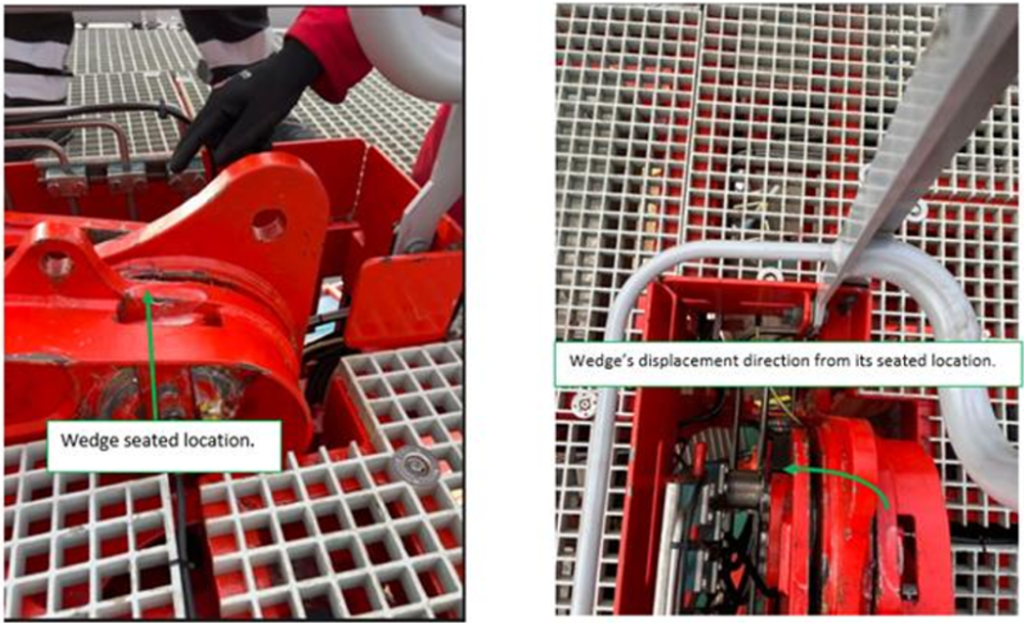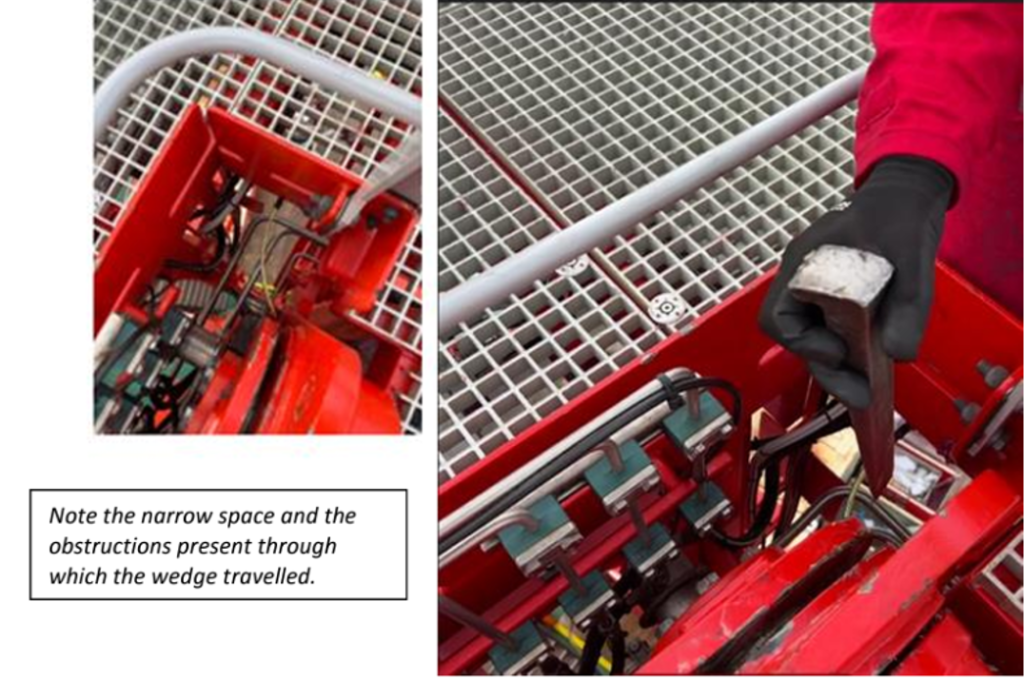MSF: two dropped object incidents
Incident 1 – dropped metal wedge
A pin was required to be pulled on a hinge system for the dynamic gangway system on a W2W (walk-to-work) vessel. As part of this task metal wedges were used to hold some of the gangway components in place. The job of pulling the pins was not going as expected due to space limitations, the effects of surface corrosion on the pins and the chosen method of pulling the pins. While pulling the pin out, the metal wedge in place was dislodged and fell between the gangway components, 13m to the deck below. No-one was underneath the gangway at the time. MSF Safety alert 23-17.


What went wrong
- The metal wedges did not have a place to secure a tethering device;
- The method chosen to pull the pin was not optimal;
- Not all the tools could be secured from dropping and there was no collective dropped object arrest system to catch smaller tools or items;
- The aft area around the gangway was not fenced off and personnel could have walked underneath the drop zone;
- Simultaneous operations were taking place in the area on deck around the gangway and there was a risk of someone accidentally walking into the DROPS zone.
Actions taken
- Modified the metal wedges to accept a tethering device;
- Investigated how a collective dropped object arrest system such as a net could be installed under the gangway for future work;
- Identified an optimal solution for pulling the pins on gangway;
- Improved guidance and training for personnel on barriering-off areas in a DROPS zone.
Members may wish to refer to
- Dropped wooden block in conductor support frame
- Dropped object near-miss: small parts falling from crane rest
Incident 2 – Dropped Lightning Rod
A lighting rod conductor mounted on top of a dynamic gangway tower for a Walk-To-Walk vessel was found lying on the deck below the tower. No personnel onboard the vessel observed or heard the object fall.
The potential for serious injury existed due to:
- The location of the dropped area (deck is frequented by personnel);
- The weight of the object (1.5kg) and the distance it fell (26m).
What went wrong
There was no obvious damage to the rod or fittings, it is assumed that the fittings loosened / unscrewed over time. The incident presents immediate causes such as:
- Impact of rough or bad weather on the rod securing connections;
- Lack of inspection/maintenance on the securing of the rod;
- Design deficiency in terms of a secondary securing mechanism for the rod.
Actions taken
- Ensure checking of lightning rod conductor fittings and other similar fittings such as lights, cameras, wind sensors etc are included in planned maintenance schedule;
- Install a secondary securing mechanism where necessary.
Members may wish to refer to
Safety Event
Published: 12 February 2024
Download: IMCA SF 03/24
IMCA Safety Flashes
Submit a Report
IMCA Safety Flashes summarise key safety matters and incidents, allowing lessons to be more easily learnt for the benefit of all. The effectiveness of the IMCA Safety Flash system depends on Members sharing information and so avoiding repeat incidents. Please consider adding [email protected] to your internal distribution list for safety alerts or manually submitting information on incidents you consider may be relevant. All information is anonymised or sanitised, as appropriate.
IMCA’s store terms and conditions (https://www.imca-int.com/legal-notices/terms/) apply to all downloads from IMCA’s website, including this document.
IMCA makes every effort to ensure the accuracy and reliability of the data contained in the documents it publishes, but IMCA shall not be liable for any guidance and/or recommendation and/or statement herein contained. The information contained in this document does not fulfil or replace any individual’s or Member's legal, regulatory or other duties or obligations in respect of their operations. Individuals and Members remain solely responsible for the safe, lawful and proper conduct of their operations.
